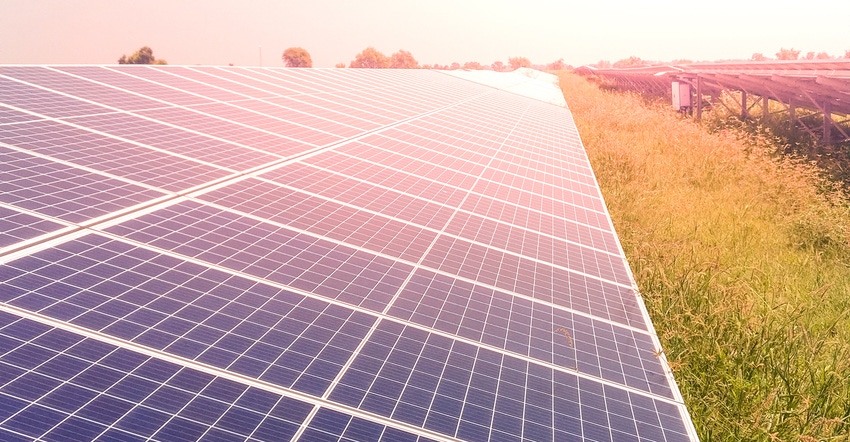December 9, 2021

“I’ve never seen such good margins evaporate so quickly.”
Jamie Walter said it, but it summarizes darn near every farmer conversation I’ve heard this winter. Nitrogen. Herbicide. Seed. Land rents. They’re all bringing dramatic pressure to bear on margins for 2022.
And the consequences of $1,400-a-ton anhydrous may be more than just unintended. They could reshape land use in Illinois for decades.
Think solar.
Because while $5 corn and $13 beans are awesome today, fertilizer has tripled, herbicides are scarce, and cash rents are up 10% to 15% on average. Farmers barely got to know those margins before they were sliced and diced. But solar will pay $600 to $1,500 an acre every year for the next 30 years. And it auto-adjusts for inflation.
Walter and his family members are putting 465 acres into an 1,800-acre solar farm near their DeKalb, Ill., farm. It’s a simple calculation in his mind.
“It’s better margins. And we’ve been in the energy business for decades already. Why not solar?” he asks.
“Farmers farm the sun. It’s what we do. Corn stores energy in the kernel. In order to release it, we have to process it. That’s not terribly efficient,” he explains. But he can put a solar panel on an acre of land and generate 30 times the energy compared to an acre of corn.
“If I can do that, I can use more land to raise feed or whatever it is,” he adds.
Conservation’s new program
Deep inside, I don’t like the idea of papering over some of the greatest farmland God ever made with solar panels.
But what if it helps the land in the long run? Walter argues it’s like a 30-year conservation program: You’re not paving over it, it’s not permanent, they’ll take it all out after 30 years, and it’ll let the land rest. The land will grow pollinators and native grasses instead of corn for three decades, and send annual returns to the tune of several hundred dollars back to the landowner.
“Are you destroying land or conserving it?” Walter asks.
He’s got a point. And with 40% of U.S. farm crops used for ethanol, farmers are in the power business already. It makes sense for farmers to get ahead of the coming transition in the transportation sector from petroleum and biofuels to electricity. Thirty years isn’t forever, and solar panels aren’t footed with hundreds of yards of concrete, like wind turbines.
Illinois is currently ranked 25th in the nation in installed solar capacity. Given our proximity to Chicago and to the Midwest power grid, we’re only going to see more of these proposals.
Sangamon County recently approved the largest solar farm yet in central Illinois. Double Black Diamond Solar will cover 3,250 acres. Swift Current Energy will begin construction of the $535 million solar farm in late 2022. The county expects to get $2 million a year in taxes for the next 35 years.
That site will generate 592.8 megawatts of energy, which is enough to power 85,000 homes, and the power will go back into a grid that stretches from Minnesota to Louisiana. The same company has smaller farms in Christian, Logan and Mason counties.
These projects are being proposed in nearly every county in the state. Counties are having philosophical discussions about land use, which is often the only negative feedback they get on the solar farms — apart from neighbors who don’t want to see solar farms or wind turbines or hog buildings. But the farmer-landowners are quick to point out these leases give long-term stability to their per-acre income — and that’s good for their kids and grandkids.
Turns out, high corn and bean prices don’t matter when everything else goes up, too.
So, what do you think: Will solar destroy the land or conserve the land? Or perhaps, something we haven’t thought of yet?
Comments? Email [email protected].
Read more about:
SolarYou May Also Like




